TSX runs higher on rate cut expectations
Introduction & Market Context
Intel Corporation (NASDAQ:INTC) released its Q2 2025 earnings presentation on July 24, revealing mixed results that sent shares down 3.66% in after-hours trading. While the chipmaker exceeded revenue expectations with $12.9 billion in quarterly sales, its earnings per share (EPS) of -$0.10 significantly missed the forecasted $0.01, representing an EPS surprise of -1100%. The presentation, led by new CEO Lip-Bu Tan and CFO David Zinsner, outlined both the company’s current financial challenges and its strategic vision for the future.
As shown in the following financial highlights slide, Intel’s revenue slightly exceeded expectations while profitability metrics disappointed:
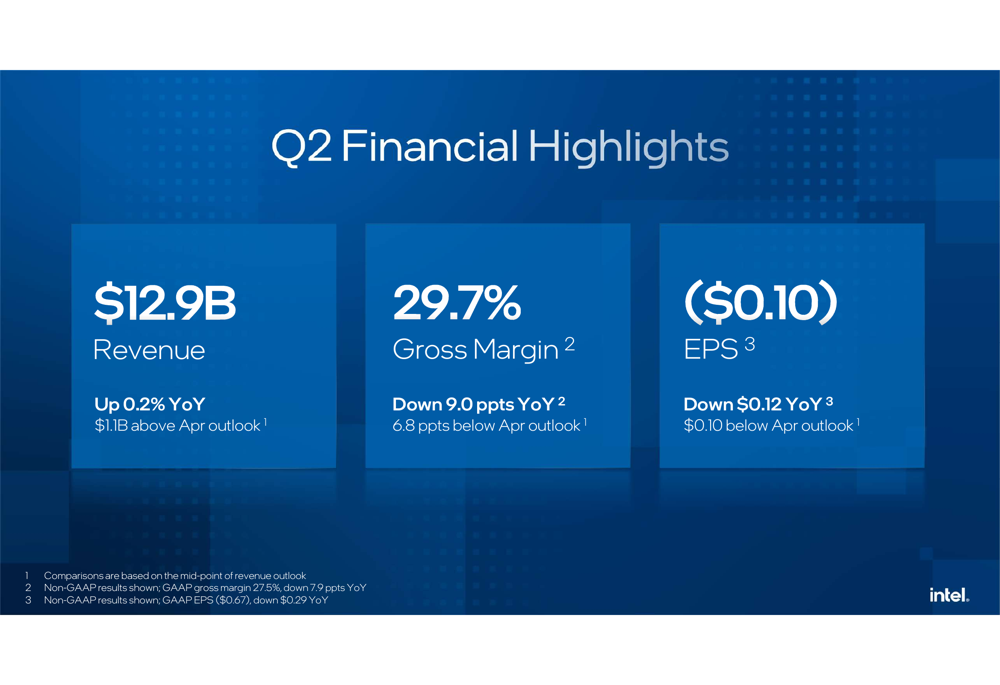
Executive Summary
Intel’s Q2 presentation emphasized a transition period for the company, with the new leadership team implementing significant operational changes. CEO Lip-Bu Tan described the vision for a "New Intel" that will be customer-centric and engineering focused, acknowledging that "we have a lot to fix in order to move the company forward." The presentation highlighted that the majority of headcount reduction actions are now complete, with the company focusing on simplifying operations and reducing organizational layers.
The comprehensive strategy outlined by Intel’s leadership team focuses on four key pillars, as illustrated in this strategic framework:
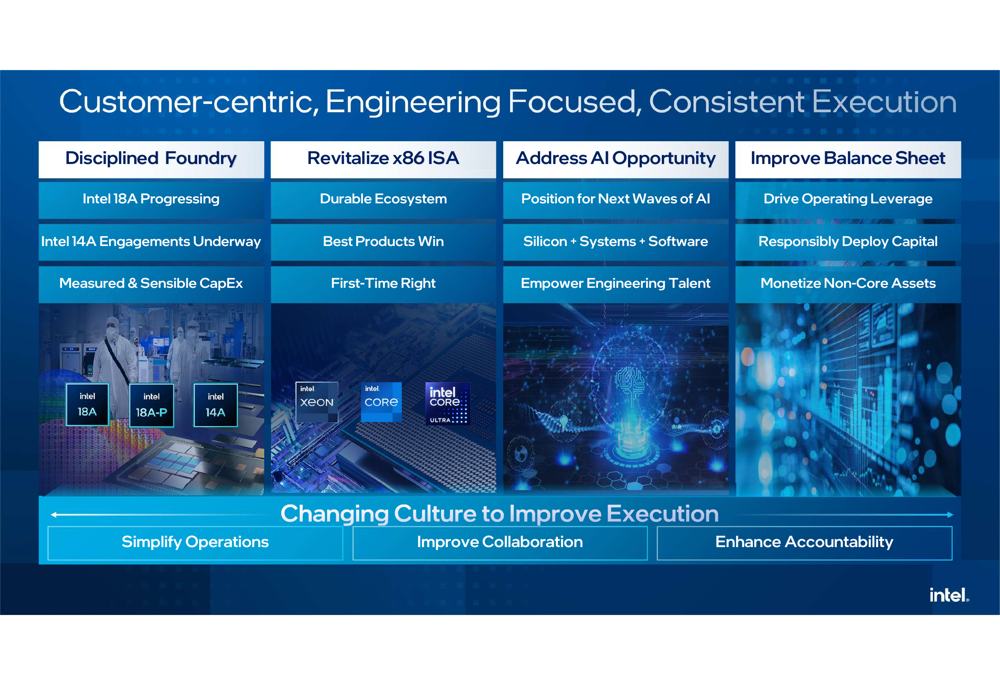
The strategy emphasizes disciplined foundry development, revitalizing the x86 architecture, addressing AI opportunities, and improving the balance sheet. This approach aims to address Intel’s competitive challenges while fostering a culture of improved execution through simplification, collaboration, and accountability.
Quarterly Performance Highlights
Intel’s financial performance over the past five quarters shows relatively stable revenue but significant volatility in gross margins and operating income. The Q2 2025 results revealed revenue of $12.9 billion, up 0.2% year-over-year and $1.1 billion above the April outlook. However, gross margin of 29.7% fell 9.0 percentage points year-over-year and 6.8 percentage points below the April outlook, primarily impacted by an $800 million non-cash impairment charge.
The following chart illustrates Intel’s financial performance trends over the past five quarters:

Breaking down performance by business segment, Intel’s Client Computing Group (CCG) generated $7.9 billion in Q2 2025, while the Data Center and AI (DCAI) segment contributed $3.9 billion. Both segments showed relatively stable performance compared to previous quarters, though operating margins have fluctuated:
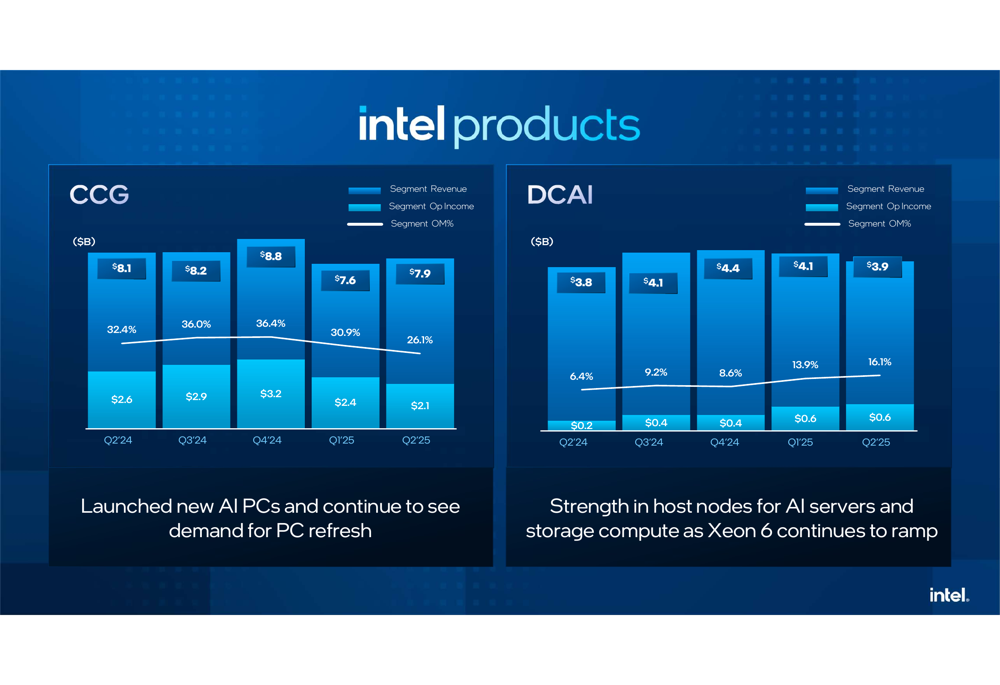
Intel Foundry, a strategic focus area for the company’s future, reported $4.4 billion in revenue for Q2 2025. The presentation highlighted progress on Intel 18A technology, with production wafers started in Arizona, though the segment continues to operate at a loss:
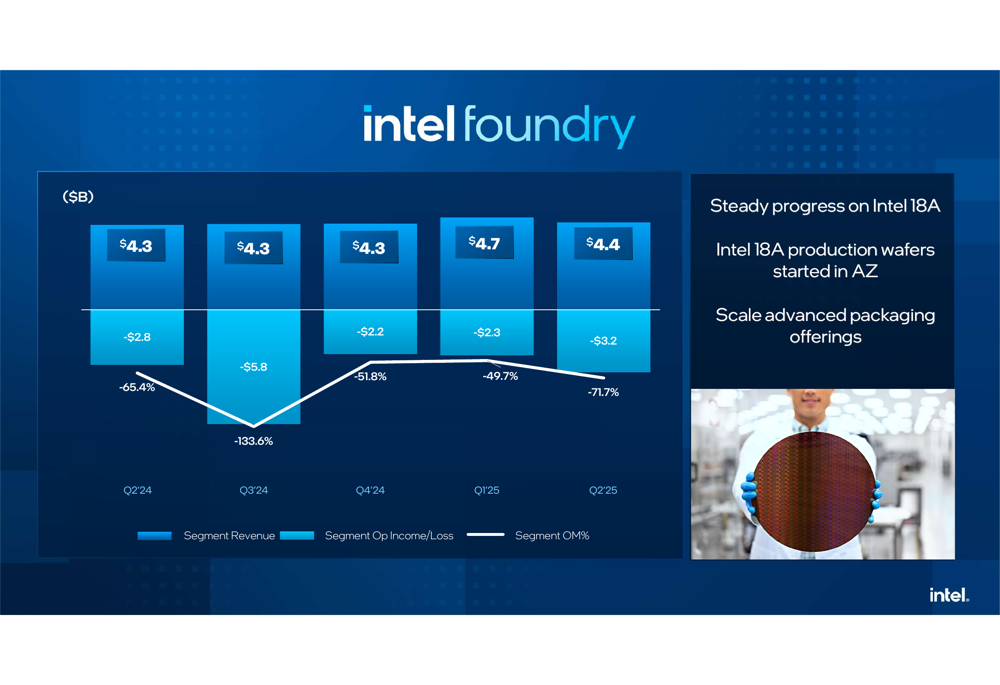
Strategic Initiatives
Under Lip-Bu Tan’s leadership, Intel is emphasizing a return to its engineering roots while becoming more customer-centric. The presentation outlined several key initiatives, including:
1. Disciplined foundry development with progress on Intel 18A technology and engagements underway for Intel 14A
2. Revitalization of the x86 instruction set architecture with a focus on "first-time right" product development
3. Positioning for future waves of AI through silicon, systems, and software integration
4. Balance sheet improvement through operating leverage, responsible capital deployment, and monetization of non-core assets
The company also noted that the previously announced sale of Altera is expected to close in Q3, representing progress on the strategy to divest non-core assets. Additionally, Mobileye was highlighted as showing improved financial performance year-over-year.
Forward-Looking Statements
Intel provided a cautiously optimistic outlook for Q3 2025, projecting revenue between $12.6-13.6 billion, which would represent a slight year-over-year decline of $0.2 billion. However, the company expects significant gross margin improvement to 36.0% (up 18 percentage points year-over-year) and a return to breakeven EPS at $0.00 (up $0.46 year-over-year).
As shown in the following outlook slide, Intel anticipates sequential improvement in profitability metrics:
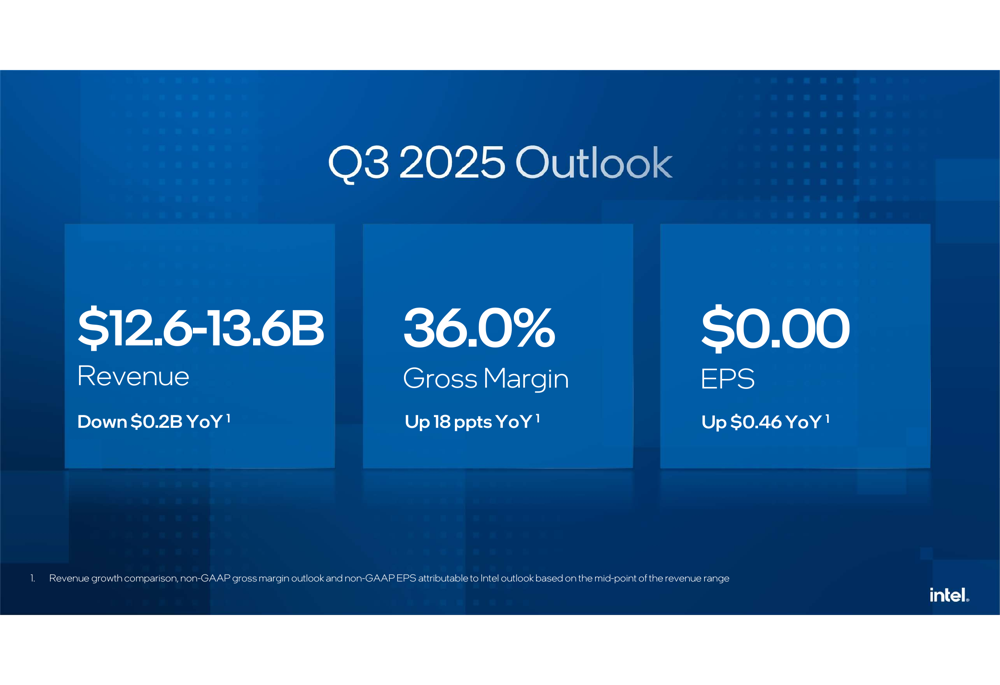
The company is targeting operational expenditures of $17 billion for 2025 and $16 billion for 2026, demonstrating a continued focus on cost discipline. Intel’s leadership emphasized that the restructuring efforts currently underway are designed to create a more agile organization capable of consistent execution.
Despite the current challenges, Intel’s presentation portrayed a company in transition, with a clear strategic vision and specific initiatives to restore its competitive position in the semiconductor industry. However, investors appear to remain cautious about the pace and effectiveness of the turnaround, as reflected in the post-earnings stock decline.
Full presentation:
This article was generated with the support of AI and reviewed by an editor. For more information see our T&C.
